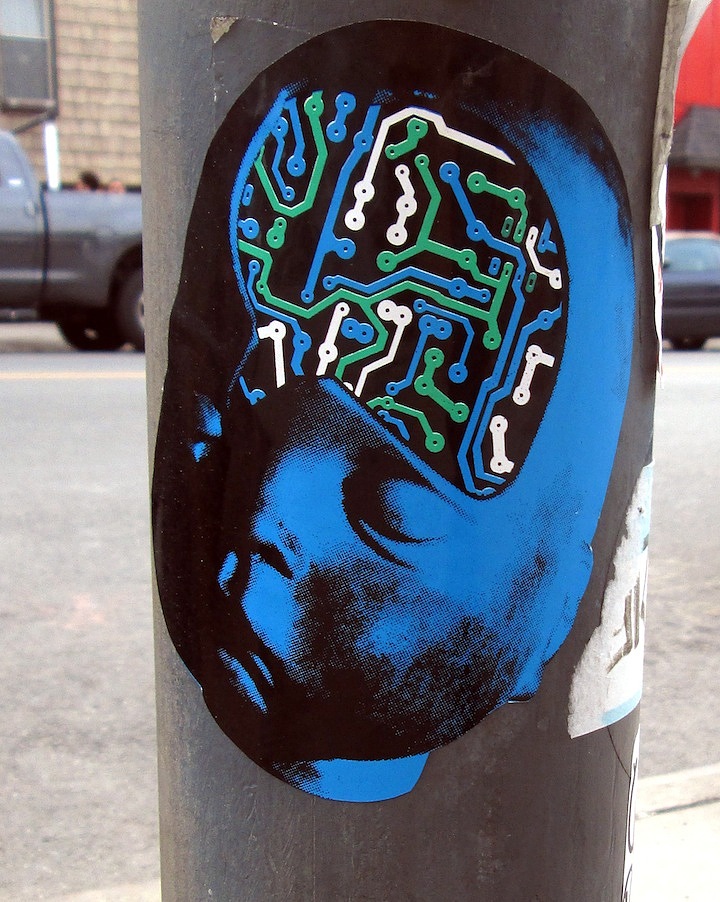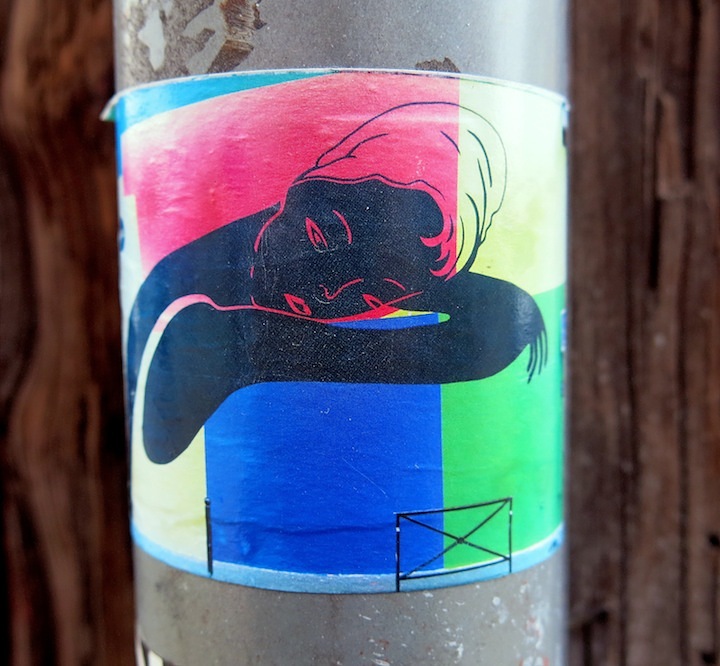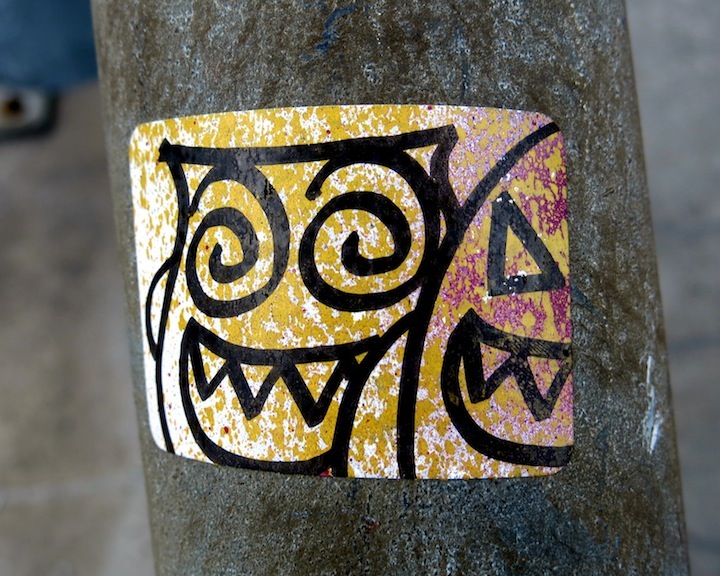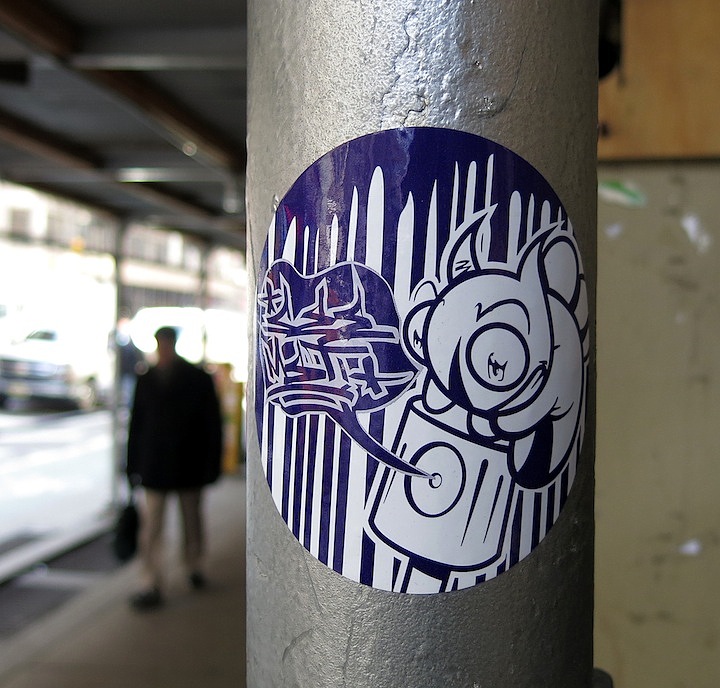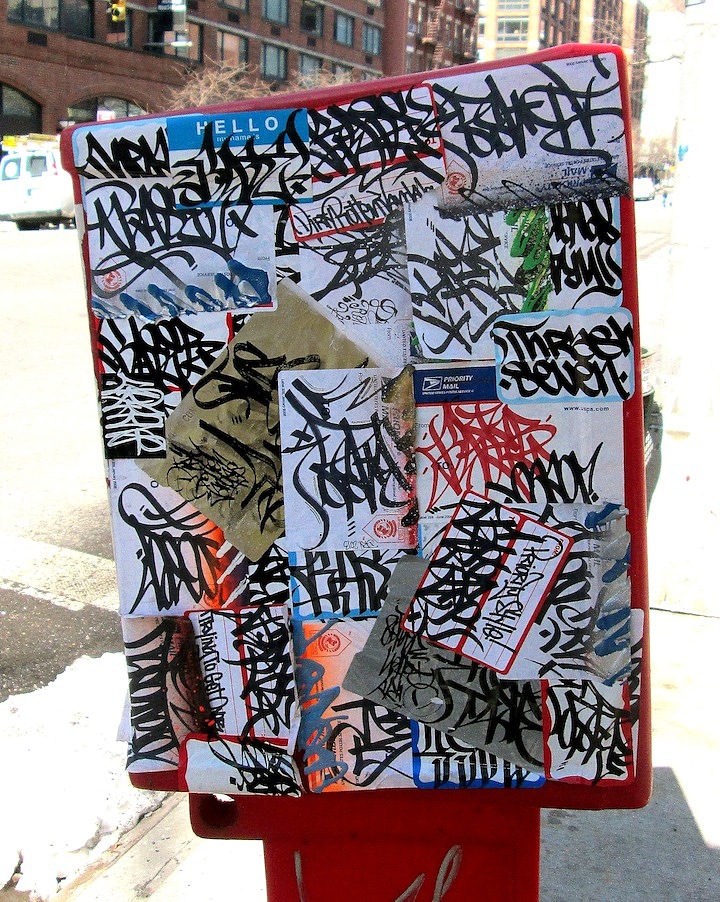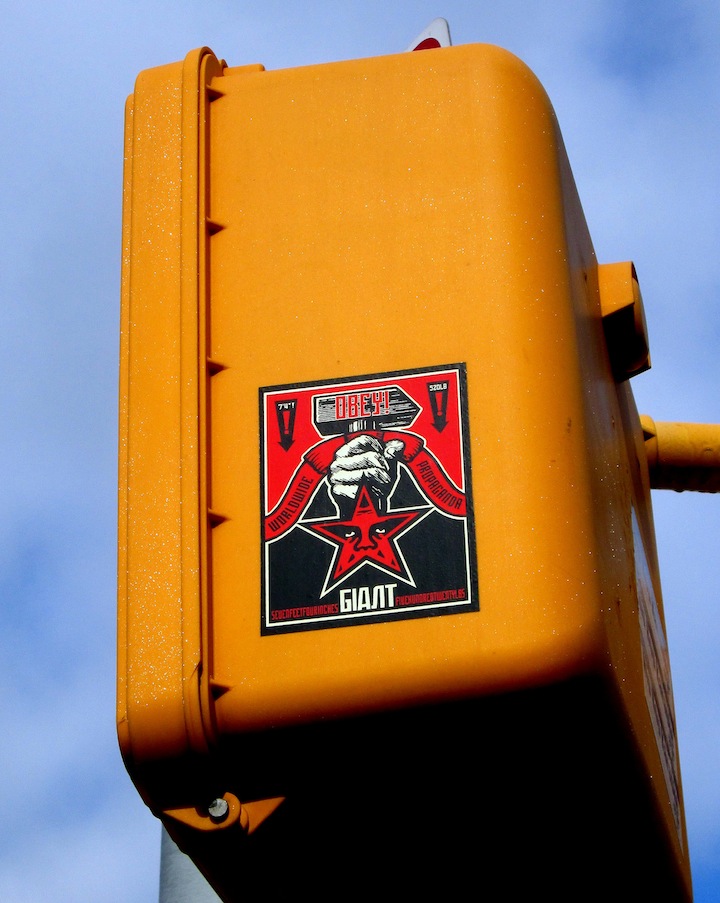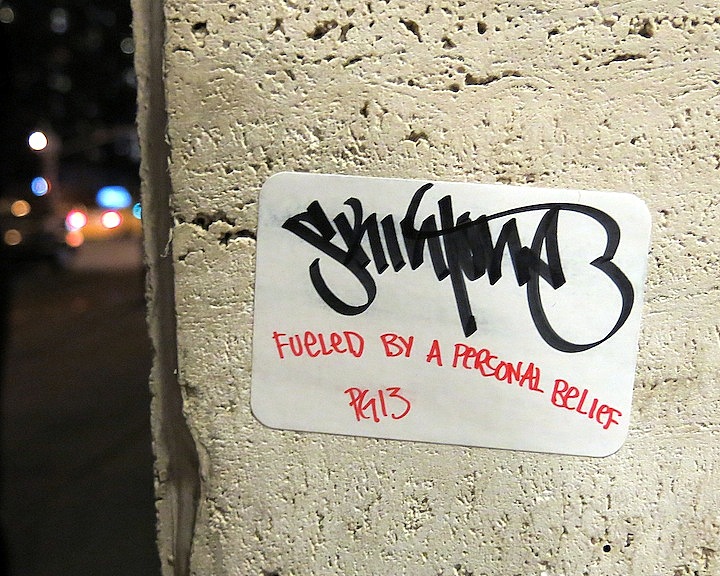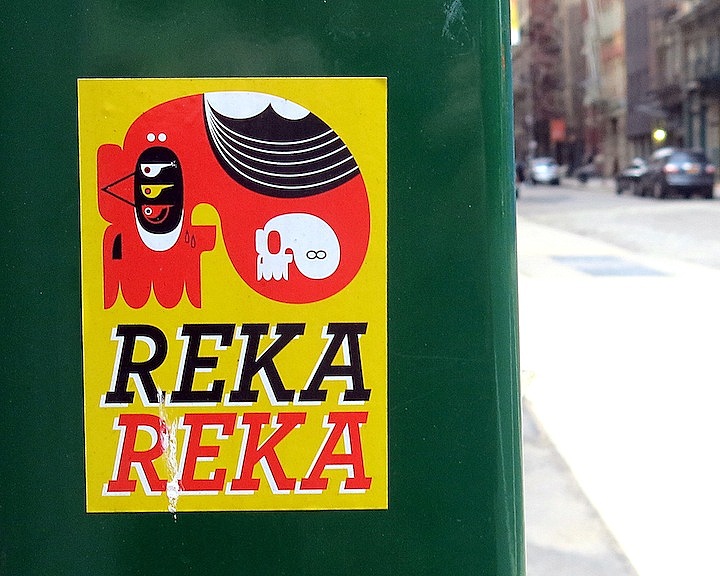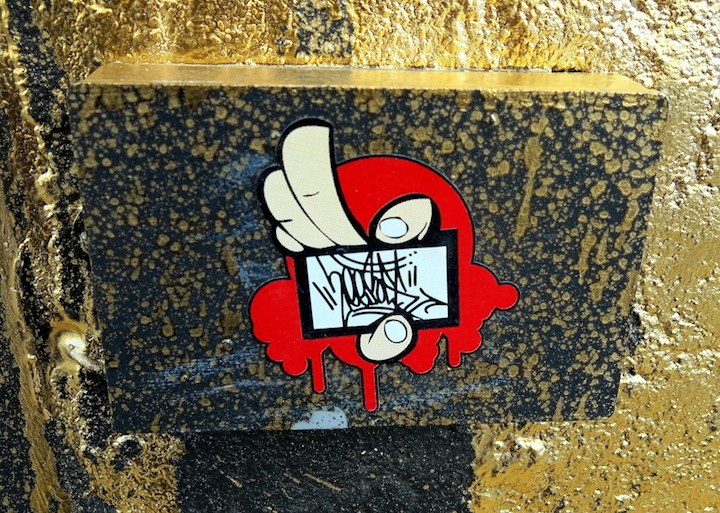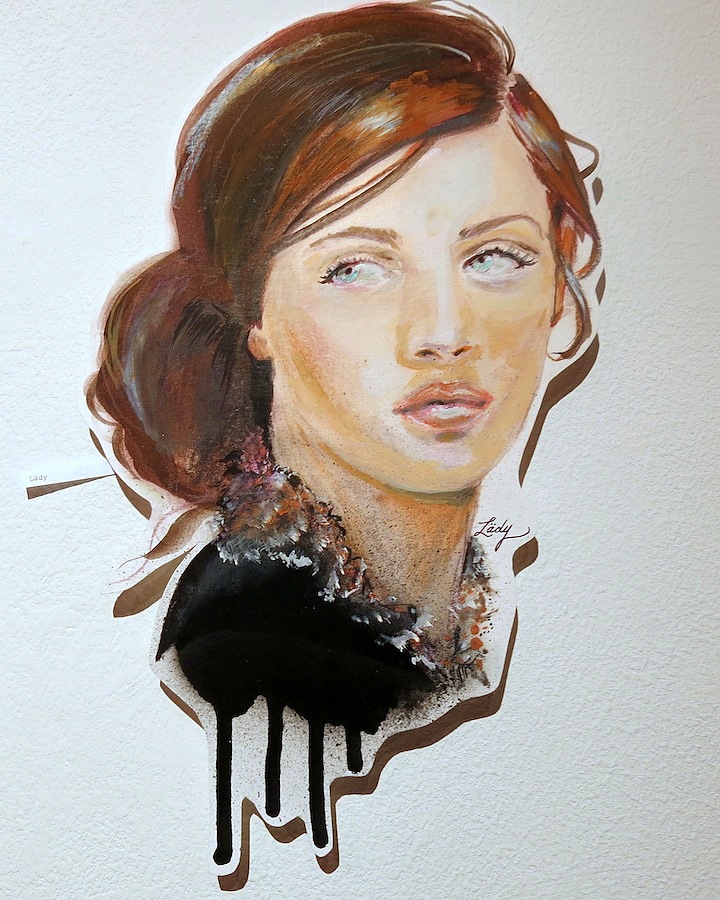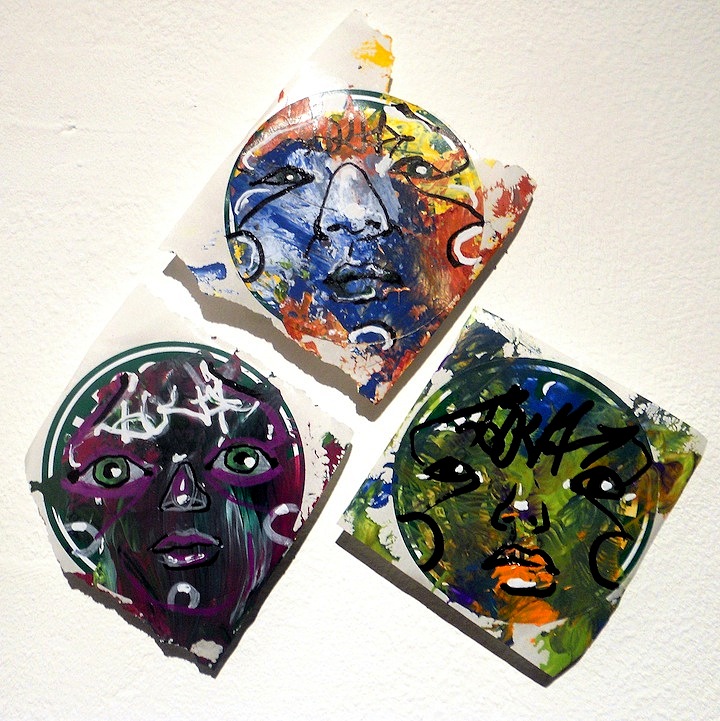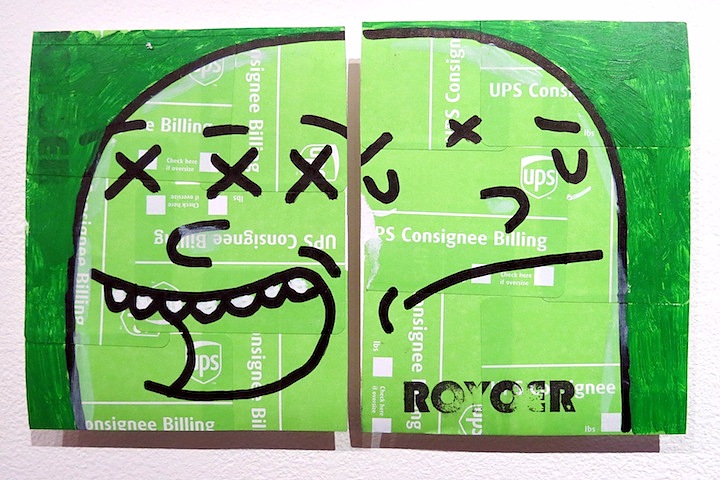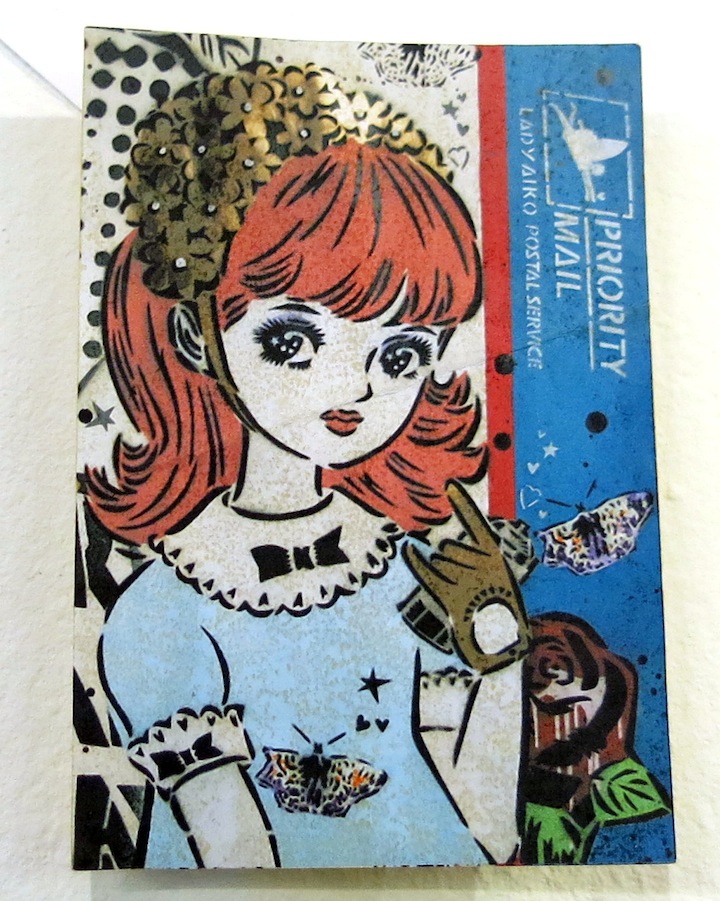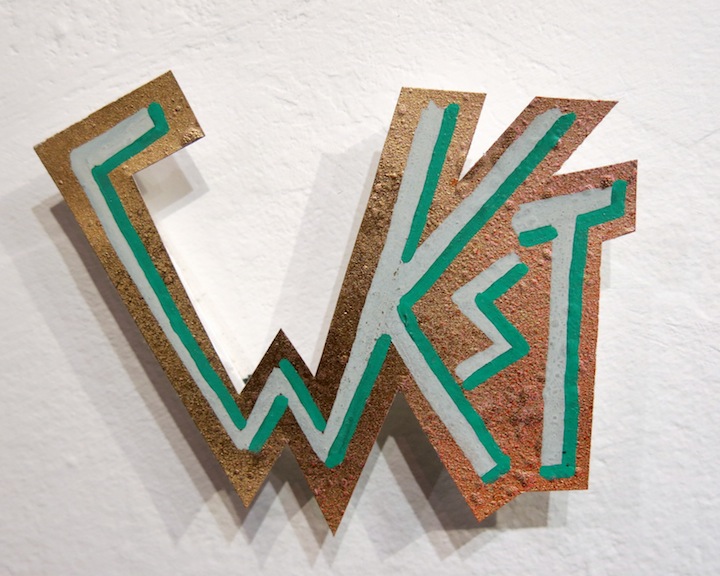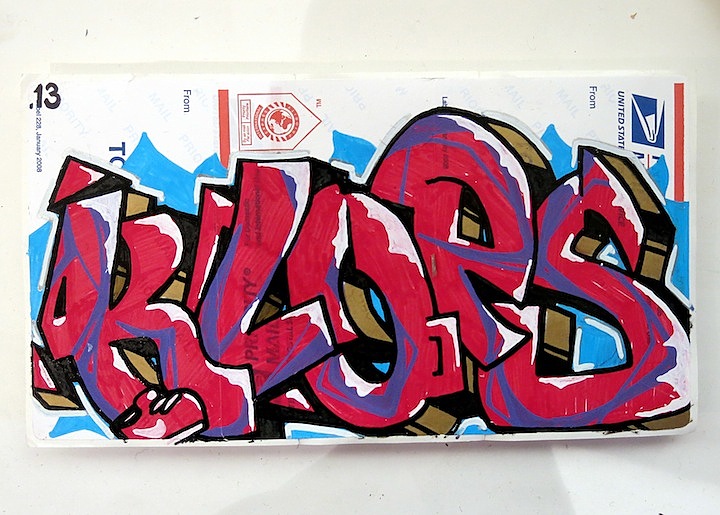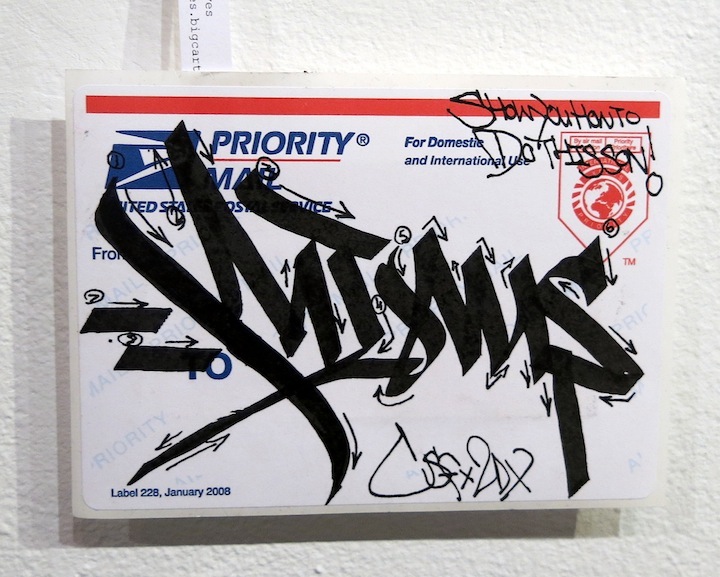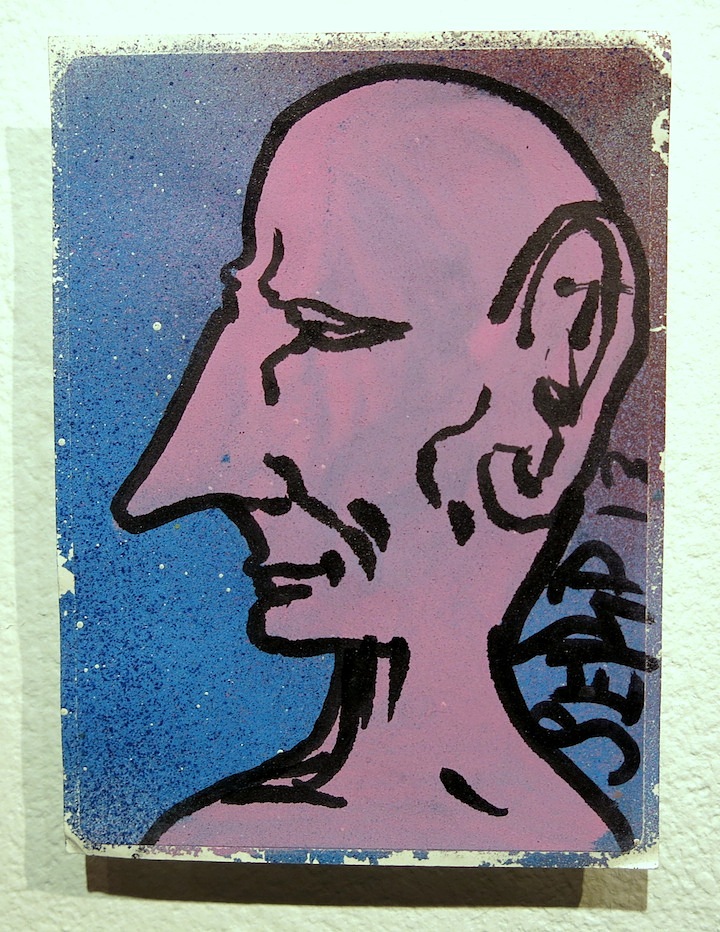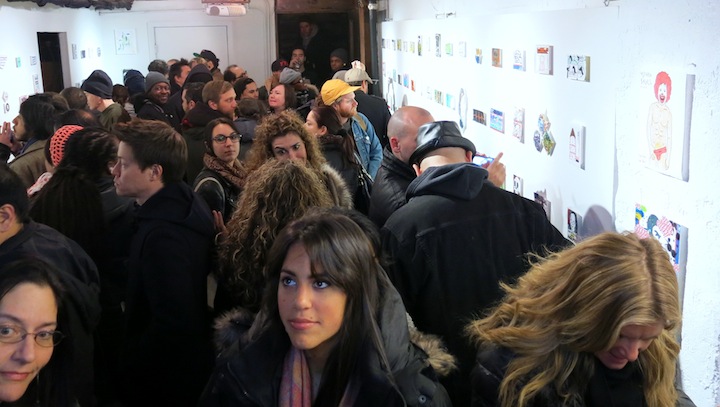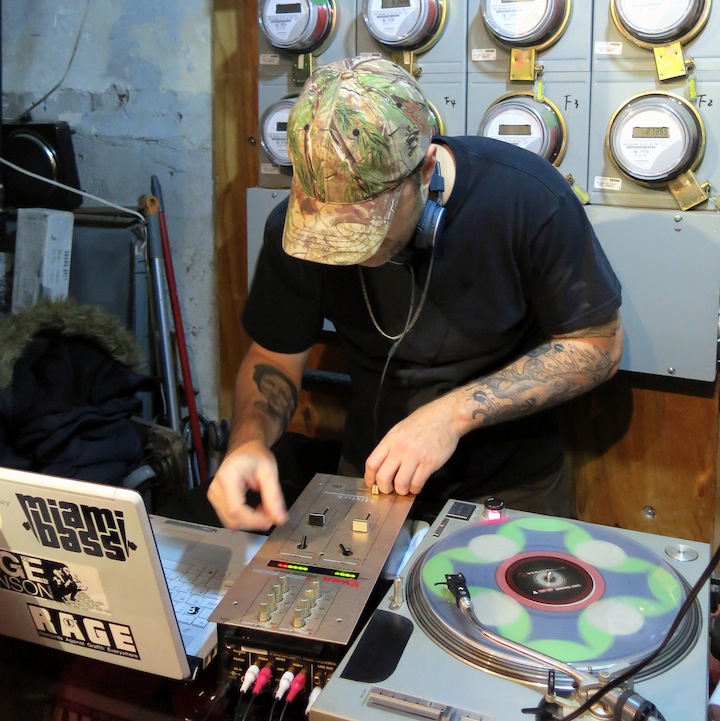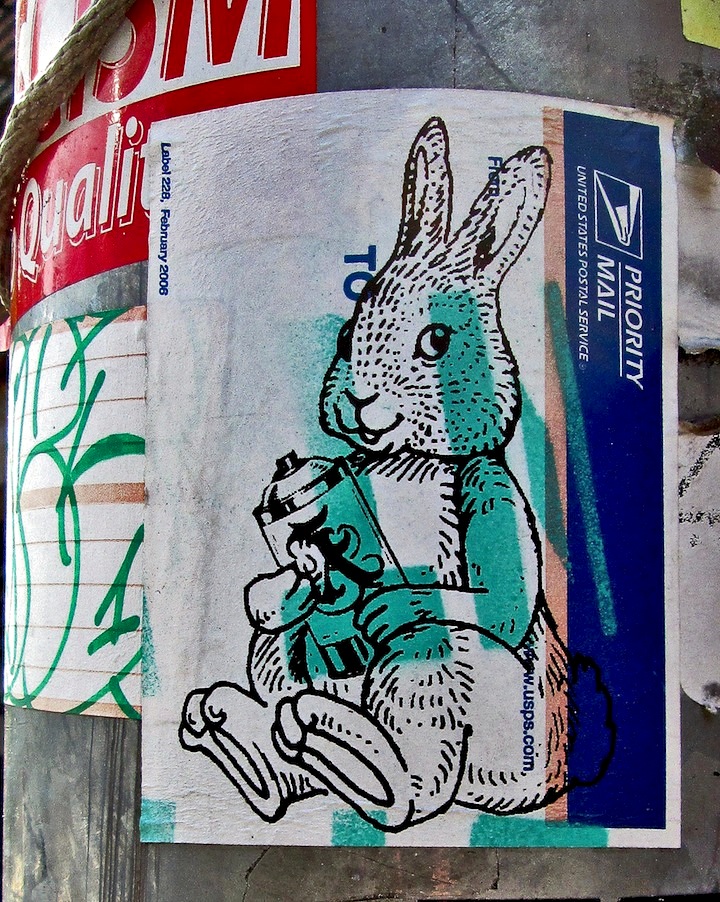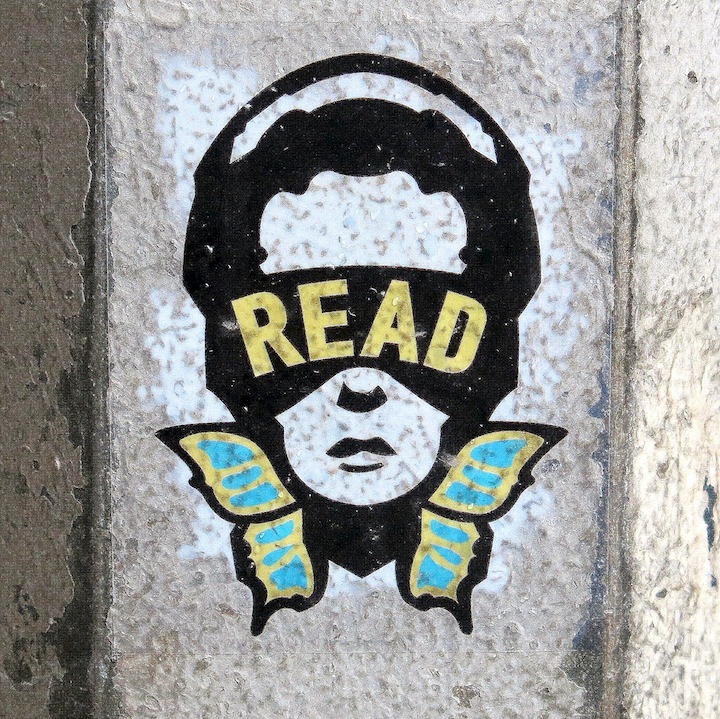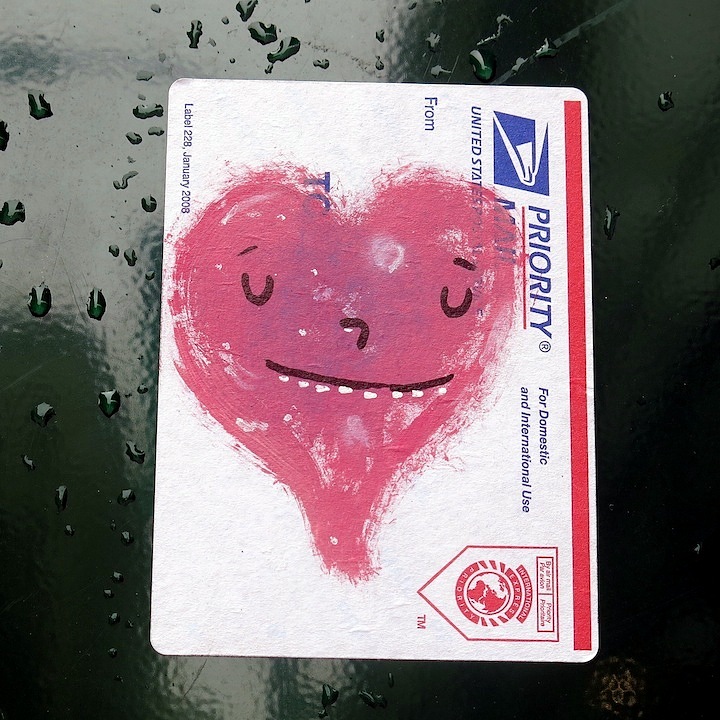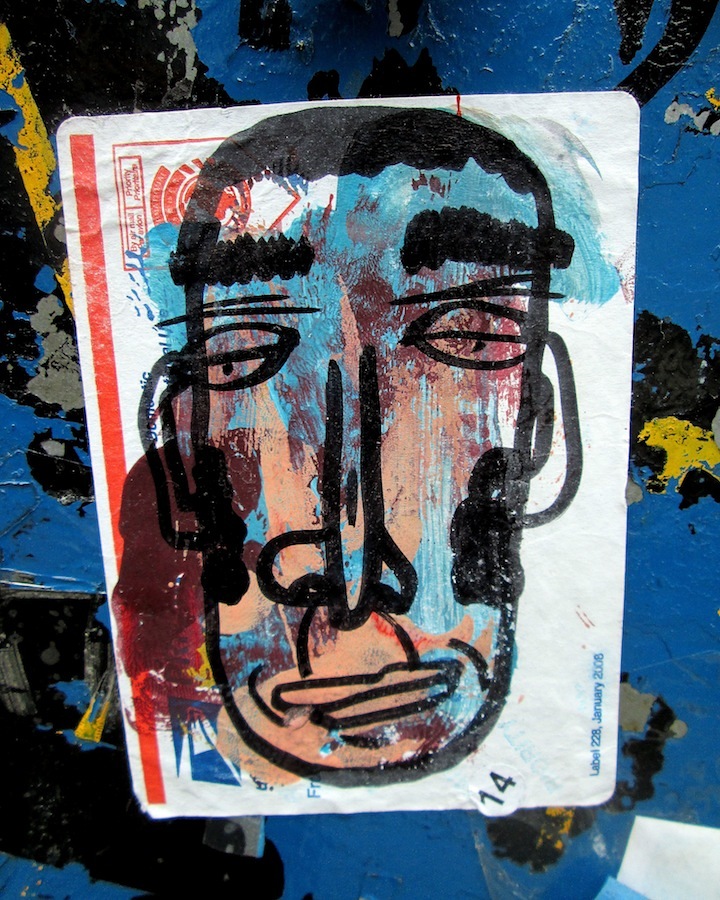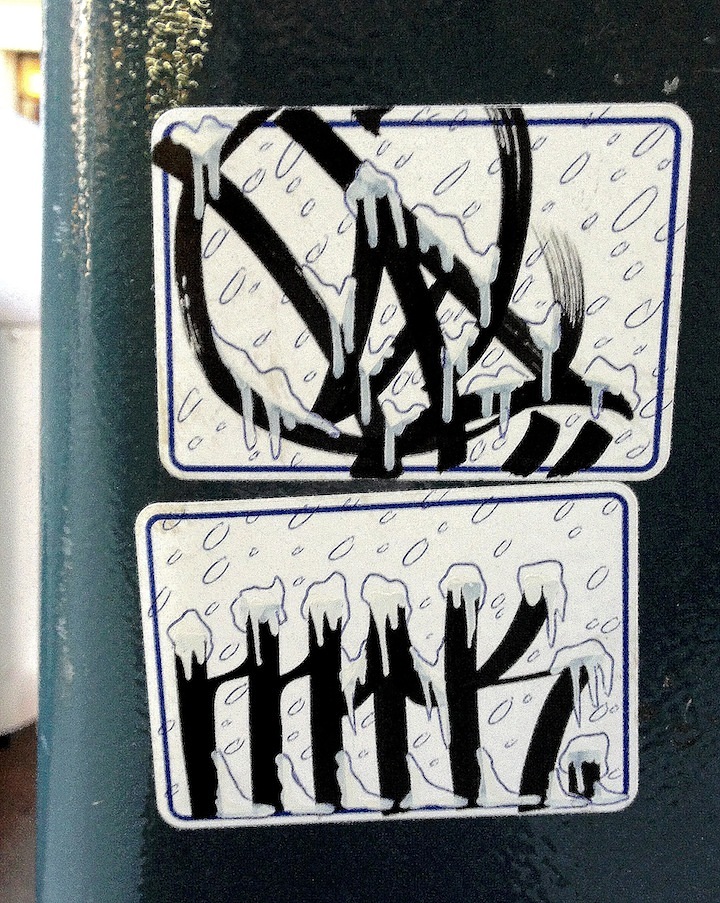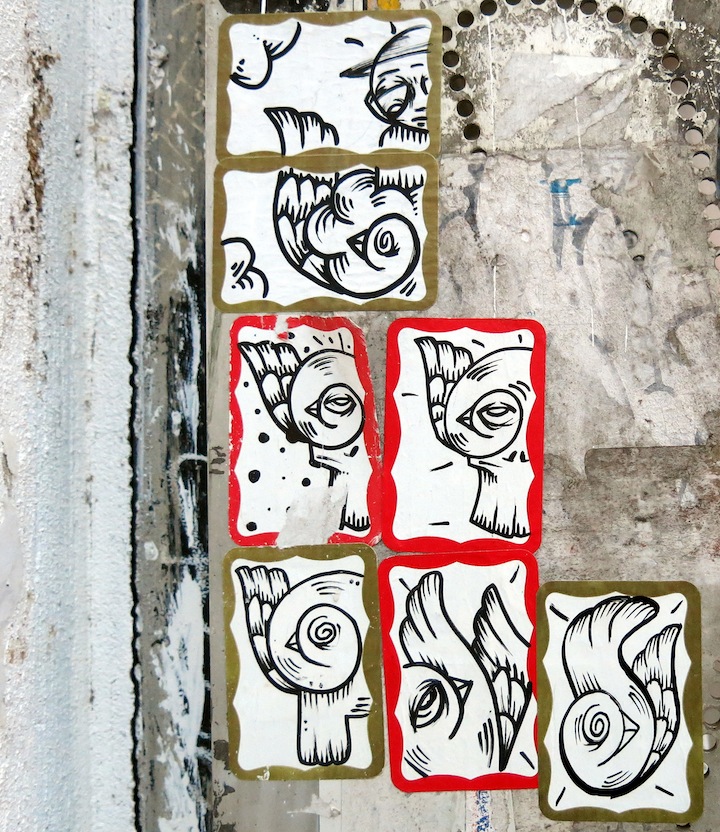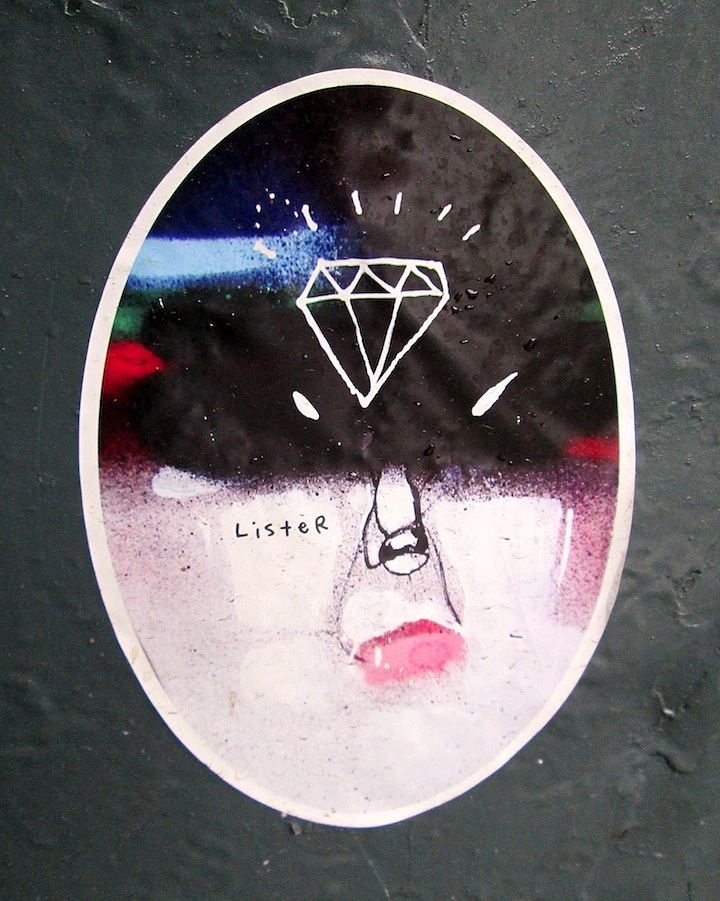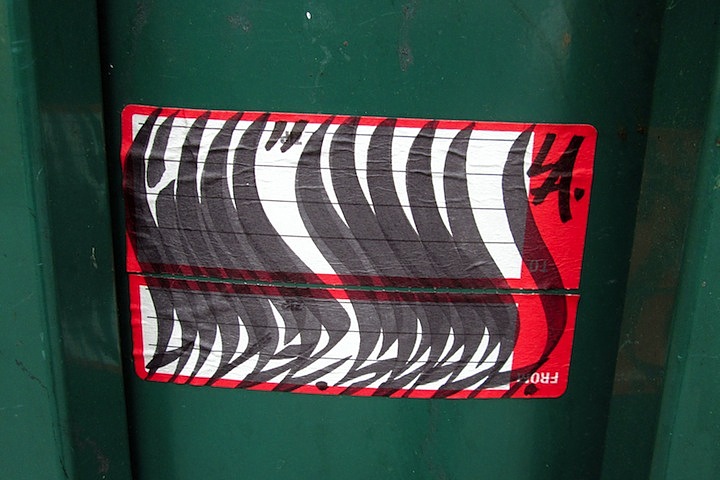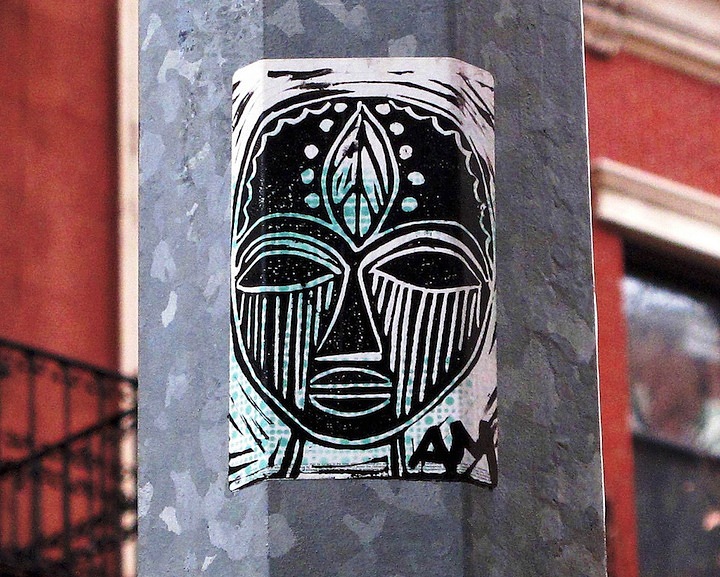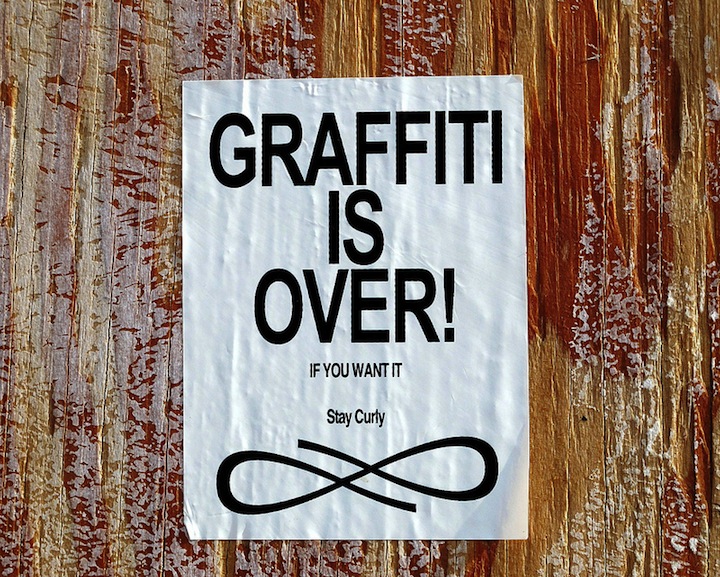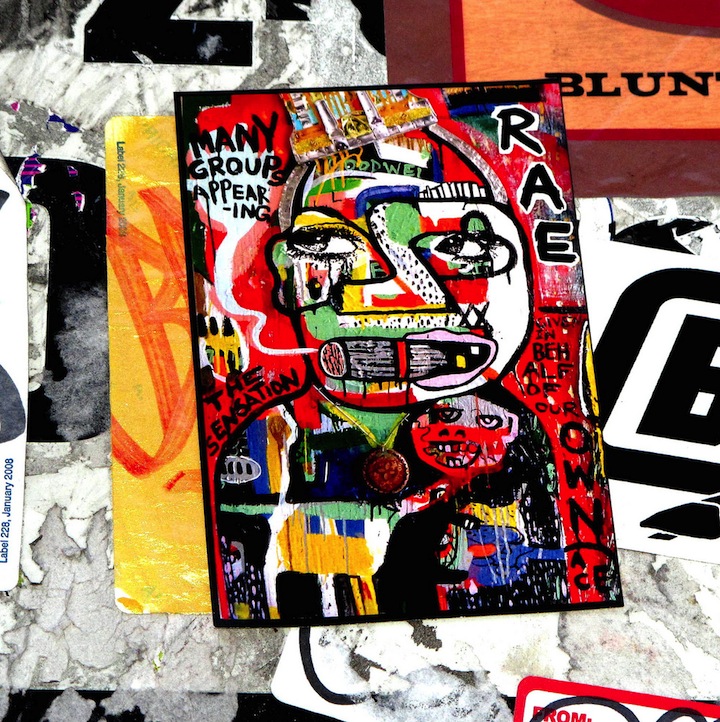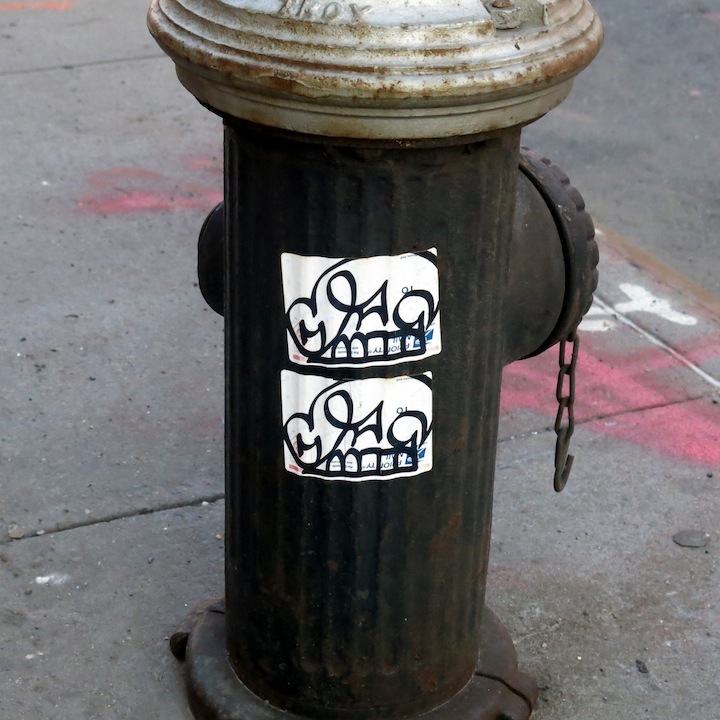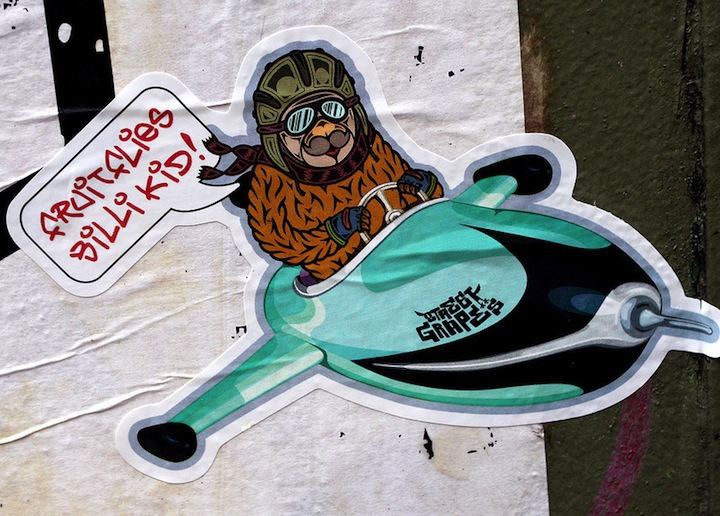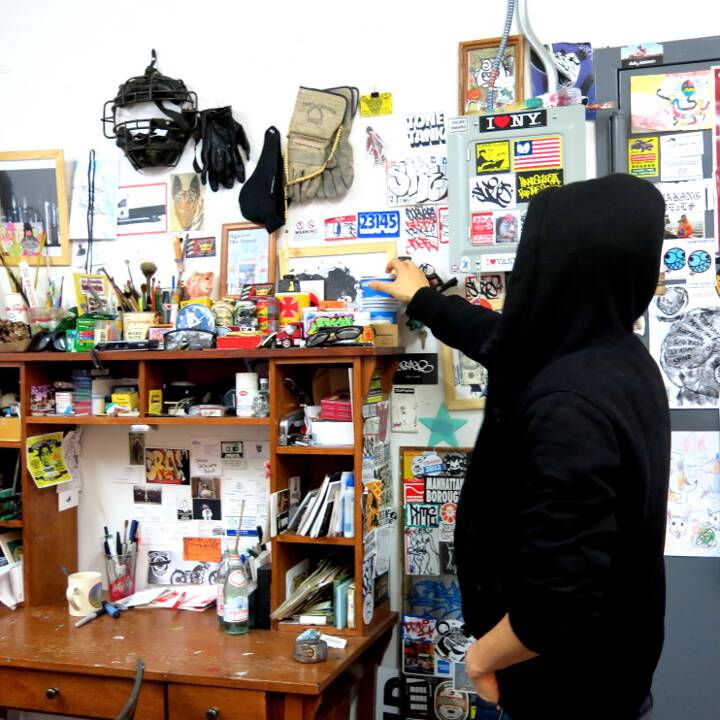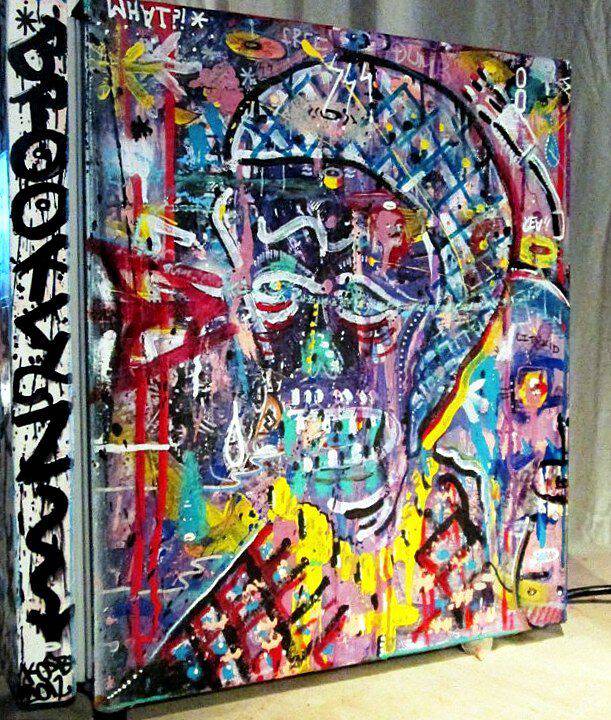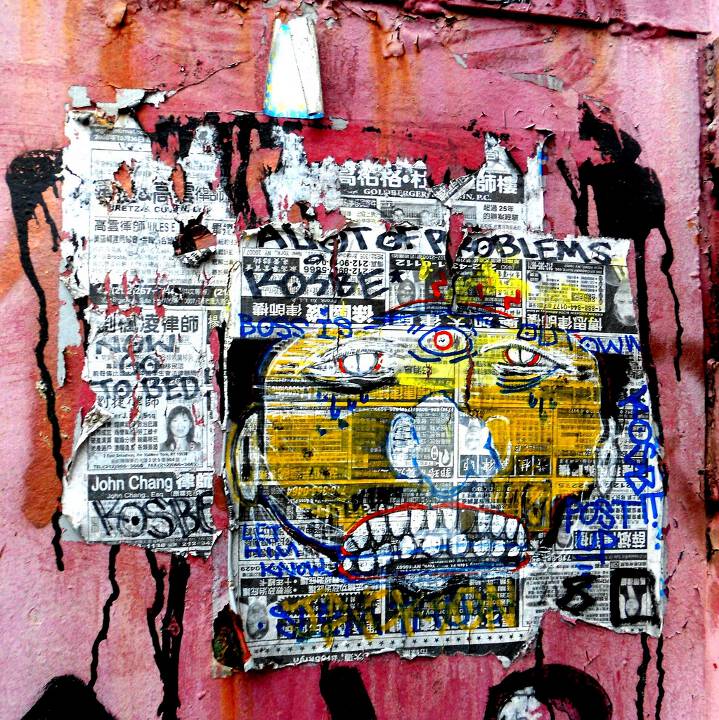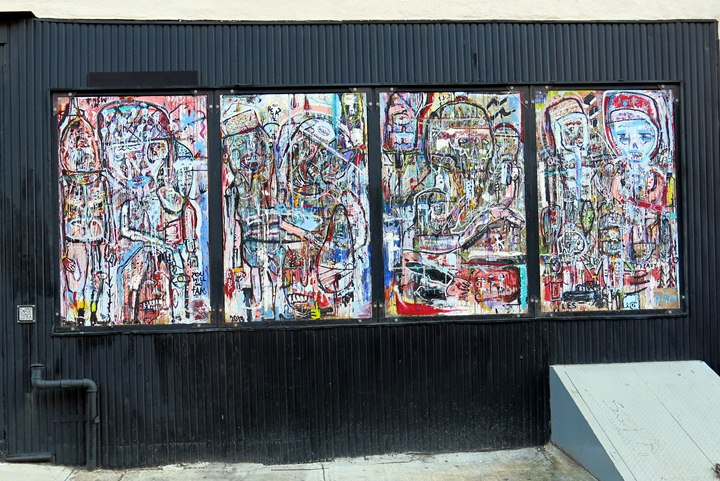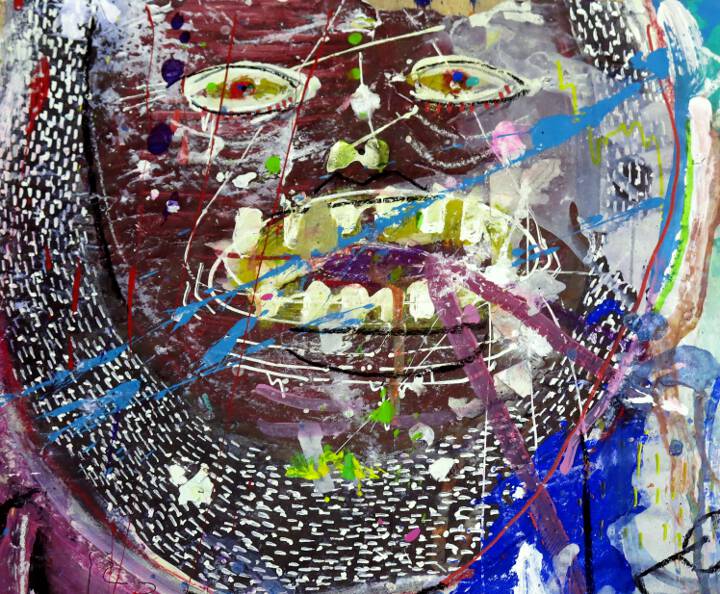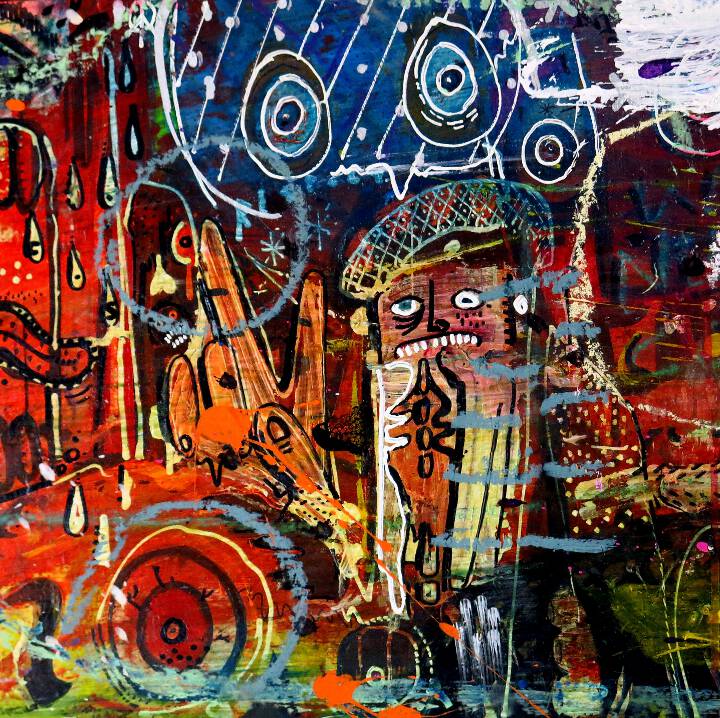Baser’s masterful handstyle can be seen on sundry stickers on a range of public surfaces throughout Manhattan. We recently had the opportunity to pose some questions to him.
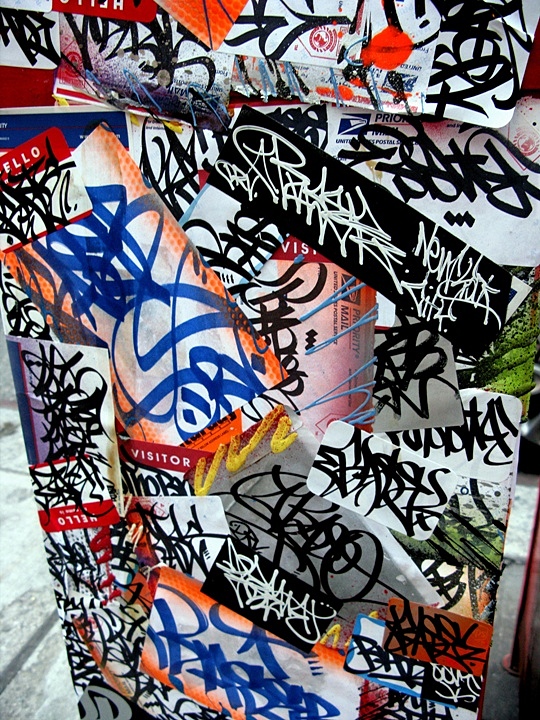
When was Baser born?
I started writing Base in 1986 in Pittsburgh. It mutated to Baser in 1999 when I began using stickers as my primary means of getting up. By then I was living in Brooklyn where I had originally been exposed to graff and where it had seeped into my brain.
Why did you choose that name?
The letter combination. I know that its connotation is drug-related. But that had nothing to do with it. Many people have suggested I change it, but I’m stubborn. Besides, after the Godfather dropped a signature in my black-book to that name, I felt it was official. So that’s it!
Any formal art training?
No. Just the desire to rock my name with style. But for all the kids out there: Go to school, master your craft and get paid!
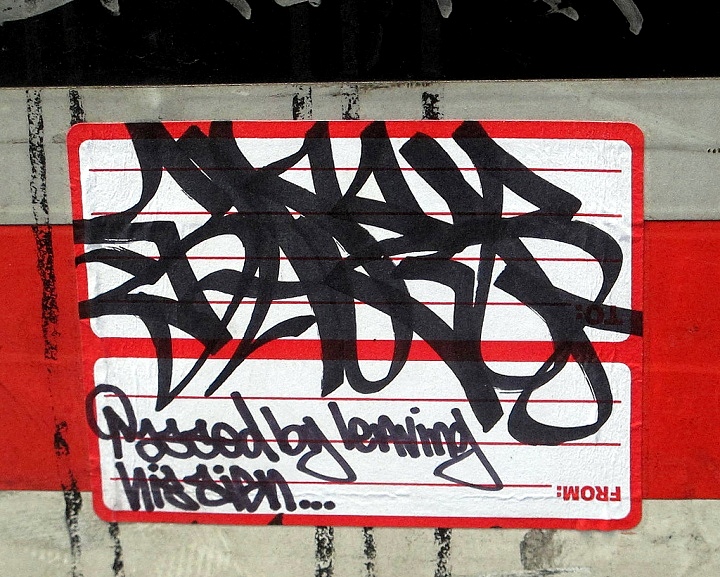
What made you go postal?
I’d been getting up with labels since ’99. Not postals or name-badges. But my supply of free labels dried up about the same time a number of books came out on the subject. And except for a few clipped tags, Baser was nowhere to be found. Burn! It became evident at that point that I needed to broaden the palette. So I started using a variety of labels, developed my style and put in the work. This way, book or not, the streets would know and I’d be certain I put in my best effort.
What made you want to share your style?
I didn’t necessarily want to ‘share’ my style. Maybe more like competing for style. I’d put stickers up to entertain myself while walking the city. I certainly liked comparing various hand-styles and wanted to see how I fit in. The quality of style a few years back drove me to take stickers seriously. So I could look at my work and be proud.
Any favorite writers?
There are so many amazing writers today. And with the specialty paints and caps, it’s even easier to produce quality work. But personally, I would go back to the cats I grew up admiring and the pioneers before them. Dudes like RTW Crew, Dondi, TFP Crew, Seen (UA), T-Kid, Phase 2, Billy 167 and Fuzz. The list goes on.
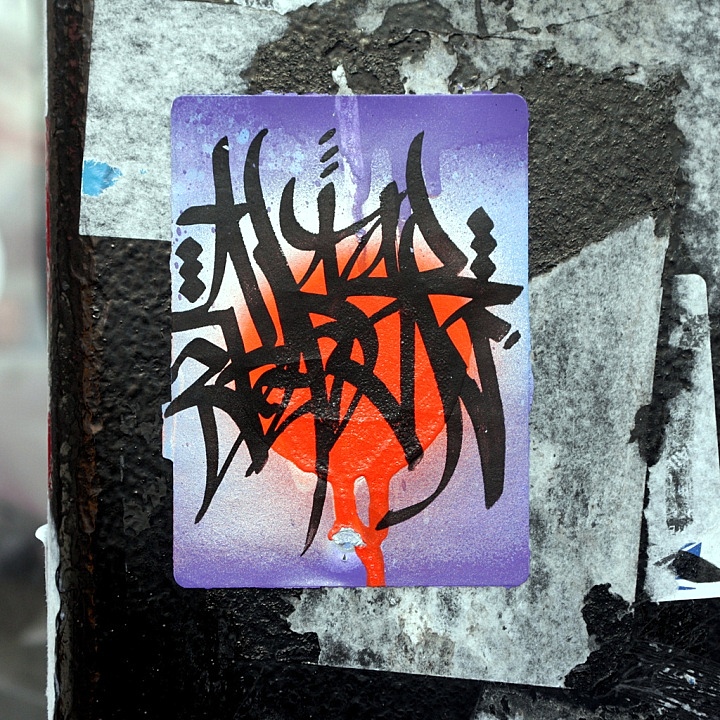
What about handstyles? Are there any handstyles you admire?
I’ve always been a fan of many hands coming out of New York City. But to be specific, Zephyr, Revolt, Haze and Trike were the first to do it. Brooklyn and Manhattan styles, for me, unquestionably kill it. Later on the stickers of Sure and Faust, Twist and others of the late ‘90s and early 2000s lit a fire in me to skill up. I might add, though, that it’s a pleasure to see anyone from anywhere who’s doing it well.
How has your style evolved?
It’s constantly evolving because I always strive to do better. Well, I hope it’s gotten better and more pleasing to the eye. Balance, composition and flow are three ingredients I try to ingrain in the muscle memory. The less my hand needs direction the more room there is for improvisation. Then more of my soul pours out and people feel it. Anyway, that’s the theory and, hopefully, the evolution is evident.
Any past collabs?
Not really. I stick to myself mostly. I did some work with Sabeth718 on the zine Stuck #1. I, also, worked on the zine Bad Things Come in Two’s with Feecees from Miami, produced by TrustNoOne. And I did a few personal ones with Chris RWK and Paecher from Colorado. That’s it. I like to keep it limited because the reality is I’m out there alone. It keeps it simple. Besides, I got more fingers on one hand than I have friends.
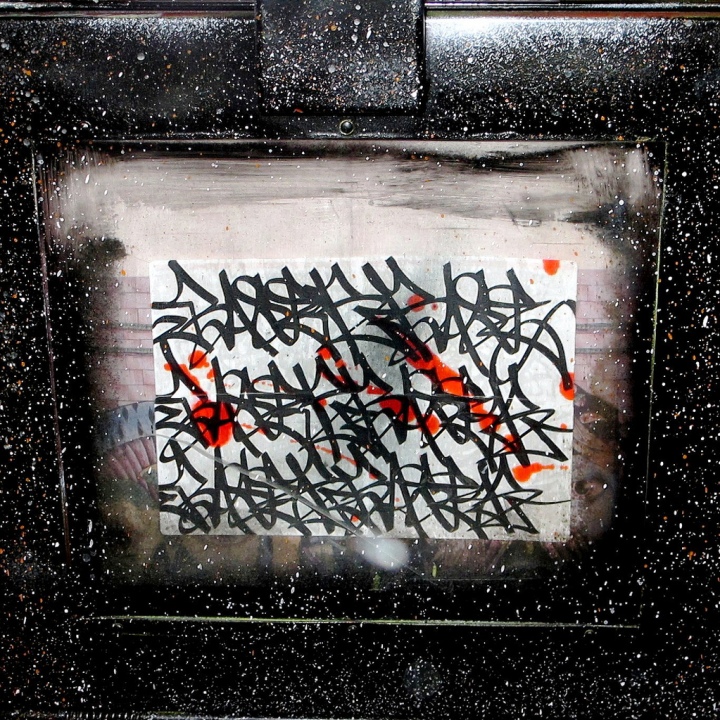
Do you work with anyone these days?
Currently I’m doing some work with KA and MTK76. We’ve been hitting the same spots for years, and we hold a mutual respect for each other’s work. It just made sense to hook up. They’re definitely two cool and talented people. As for anyone else, it remains to be seen.
Have you any thoughts about the current graffiti and street art scene?
I miss everything about the pre-Giuliani New York, especially the graff scene. I’m not too hip to all these street artists. They do what they do, and some of it is really cool. But for me it’s always been about writing, and these days, limited to stickers. So I’m not sure I can judge the current scene. As long as they don’t go over me! Like Mare 139 said, “We may have lost the trains but we’ve gained the world.”
How do you feel about people peeling off your stickers?
I hope they last on the streets, no doubt. But I give away so many to the city that it balances out the fact that I sell sticker packs. I’ve always said, “If you don’t want to prop the dough on a pack from me, then start peelin’ and stealin’.” I don’t get mad; I just go in with more. Ha!
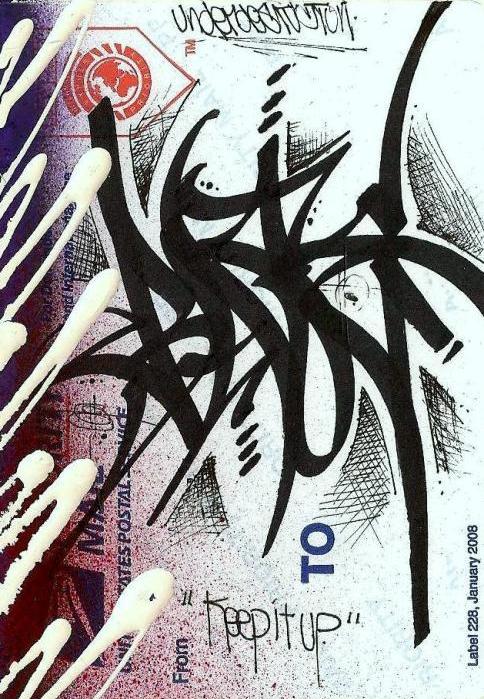
What’s your most memorable graffiti moment?
I could hit you with a few clean train chase stories. But the most memorable was back in 1989. A couple of so-called friends came in from out of town. I took them on a flick mission to different spots around the city. I knew Vulcan worked at the old Forbidden Planet near Union Square. So we decided to go down there and see if he would drop a tag in our books.
Did he?
When we got there, we went downstairs and there were these two cats there — one dude at the register and a dude with a Kangol hat. No Vulcan. It turned out he was off that day. But the guy with the Kangol was looking for him too.
“You don’t write, do you?” he asked us.
“Yes!” I replied, nodding toward my book.
He quickly glanced through it and handed it back, telling us he was Phase 2.
Wow! The Godfather!
He asked if we knew who he was. No doubt because of our age, we looked ignorant. But of course I did. I had subscribed to the 1980’s zine IGT he did with Schmidlap. Also I was an early collector of books on graff, so I had seen a photo or two of him and definitely his work.
“If you have time, we’ll head over to Union Square and I’ll do something in your books,” he said.
We headed over.
And what began as seemingly random lines all over the page turned out to be a masterpiece. I hadn’t seen anything like it. He did one for each of us, but mine seemed more complex. All the while, he schooled us on the history of writing and the birth of Hip Hop. It was a great oral history lesson. I will never forget that day and will always be grateful to him.
Have you exhibited your work?
Yes! Everywhere from 8th Street stir up to 80th Street! As far as galleries go, I had a few stickers exhibited at NYU’s Bronfman Center. I also recently donated a collage for the Sandy Relief Auction at Trumbull Studios. There might still be some of my work displayed at the Bomit Pop Up shop in California. But that’s it.
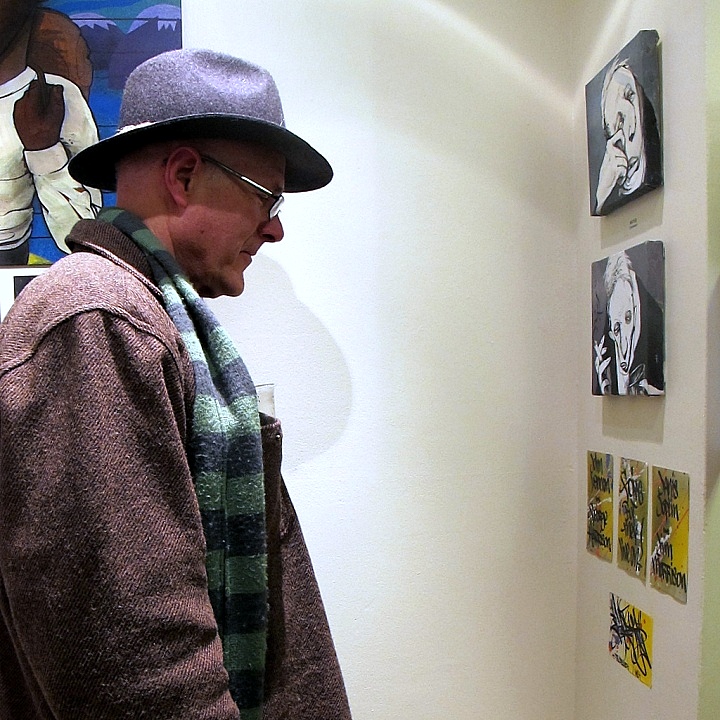
How did you start selling your work?
Early on I’d give them away or trade. But that didn’t work out too well. So as interest went up, I put a price on sticker packs and some of the larger pieces. I’m not making a living at it, nor is it why I do it in the first place. But I’m not one to turn away cash. Who is?
What do you see as the future of stickers on the streets?
Not sure. It’s looking pretty dim. There’s only a few of us left doing quality work. I miss the news boxes with their collages of first-rate handstyles that were all over the city a few years back. I was recently looking at some flicks from just a couple years back, and styles were great. Part of the reason I started doing collages on the boxes is because they were too vacant or sporting just a few stickers that were plain garbage. I guess we’ll see.
How do you feel about the role of the Internet in all this?
The Internet, with its entire social media, opened up a worldwide stage for us. It’s part of the game now. But nothing beats actually walking the streets or riding the trains and experiencing graff as it was meant to be seen. I still get that rush when I turn the corner and Bam! there’s a dope tag, fill-in or piece.
What’s ahead?
I don’t know. What are the choices?
Interviewed by Lenny Collado; photos by Dani Mozeson, Lois Stavsky and courtesy of the artist. Final image features noted photographer Henry Chalfant — checking out Baser’s stickers on exhibit at NYU’s Bronfman Center
